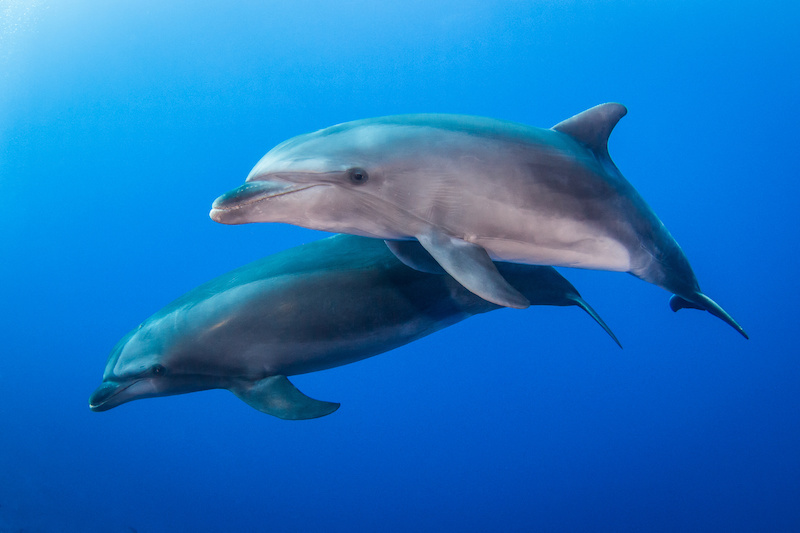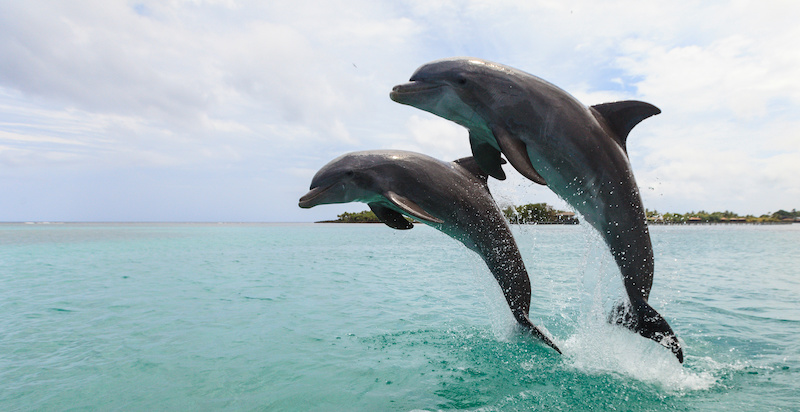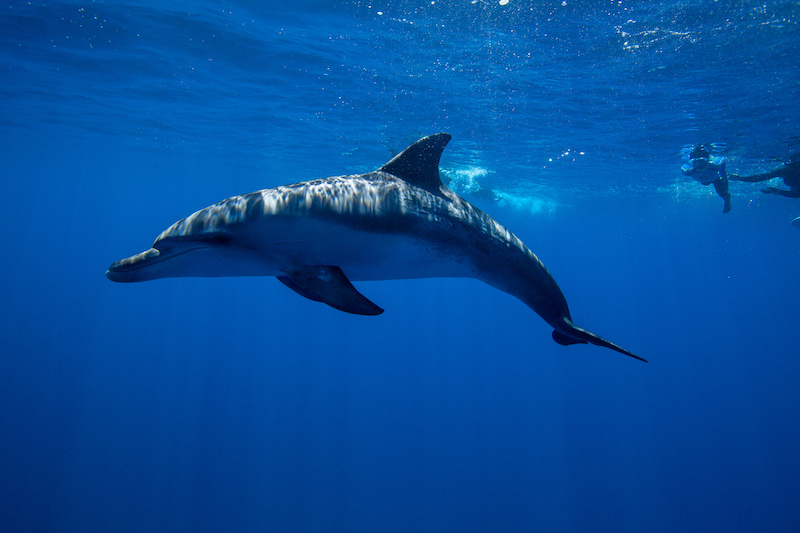
The Bottlenose Dolphin, or Tursiops truncatus, is one of the most well-known and widespread dolphin species globally. This article invites you to explore the fascinating characteristics of this intelligent and sociable animal, its natural habitat, reproductive habits, and dietary preferences. Dive into the world of these iconic marine creatures to understand their significance in the marine ecosystem.
Characteristics of the Bottlenose Dolphin
The Bottlenose Dolphin (Tursiops truncatus) is one of the most iconic and recognized dolphin species in the marine world. Belonging to the Delphinidae family, it is distinguished by its impressive size, measuring between 2 and 4 meters in length and weighing from 150 to 650 kilograms. These cetaceans have remarkable longevity, being able to live up to 50 years. Morphologically, the Bottlenose Dolphin has a massive and robust body, characterized by a highly curved dorsal fin and pointed pectoral fins. Its short rostrum, combined with mouth folds, gives it a characteristic smiling appearance.
The coloration of the Bottlenose Dolphin varies from dark gray to a lighter belly, sometimes white or pinkish, providing effective camouflage in the marine environment. These dolphins are known for their high intelligence and sociable behavior, often forming groups of several dozen individuals. They are particularly demonstrative, performing spectacular leaps, the meaning or utility of which remains mysterious.
The Bottlenose Dolphin is also famous for its role in popular culture, notably through the TV series “Flipper.” It has become a symbol of marine wildlife, drawing attention to the need to protect the oceans and their inhabitants. Its presence in all seas worldwide, except for Arctic and Antarctic regions, makes it a key species for understanding marine ecosystems and their conservation.

Habitat of the Bottlenose Dolphin
The Bottlenose Dolphin (Tursiops truncatus) occupies a wide range of marine habitats worldwide, excluding polar waters. These versatile marine mammals are found in temperate and tropical seas, demonstrating incredible adaptability to various environments. Two main populations are distinguished: coastal dolphins, which prefer shallow and warm waters near the coasts, and pelagic dolphins, which inhabit open sea.
Coastal dolphins are often observed in coastal areas, lagoons, and near estuaries, while pelagic dolphins are found in deeper and open waters. This habitat distinction influences their behavior, diet, and even social structure. Coastal dolphins tend to become sedentary, attracting attention from tourists, while pelagic dolphins are more mobile and elusive. Their presence in almost all types of marine habitats underscores their important ecological role as predators and indicators of the health of marine ecosystems.
Reproduction in the Bottlenose Dolphin
Reproduction in the Bottlenose Dolphin (Tursiops truncatus) is a key aspect of its life cycle. These dolphins reach sexual maturity around the age of 12, a time when they actively participate in the reproductive process. The gestation period in females lasts about a year, after which they give birth to a single calf. Reproduction frequency is typically spaced, with a mother giving birth every 2 to 3 years. This strategy allows the mother to dedicate enough time and resources to the care and education of each offspring.
Weaning of the calf usually occurs after 18 months to 2 years, during which the young one learns essential survival skills such as hunting and social navigation within the group. The close bonds between the mother and her calf are crucial for the behavioral and emotional development of the young dolphin, playing a significant role in the complex social structure of these marine mammals.

Diet of the Bottlenose Dolphin (Tursiops truncatus)
The diet of the Bottlenose Dolphin (Tursiops truncatus) is diverse and adapted to its marine environment. These marine mammals are primarily piscivores, feeding on a wide variety of fish that inhabit temperate and tropical waters. In addition to fish, their diet also includes crustaceans and cephalopods such as squid, which they skillfully hunt. Their diet slightly varies depending on whether they are near the coast or in the open sea.
In coastal areas, they consume more reef fish and small marine invertebrates, while in the open sea, they turn to pelagic prey, thus adapting their diet to the available resources. This dietary flexibility is crucial for their survival, allowing them to adjust to seasonal variations in food availability in their natural habitat.
Discover all the cetacean species that can be found near the coasts of Martinique: